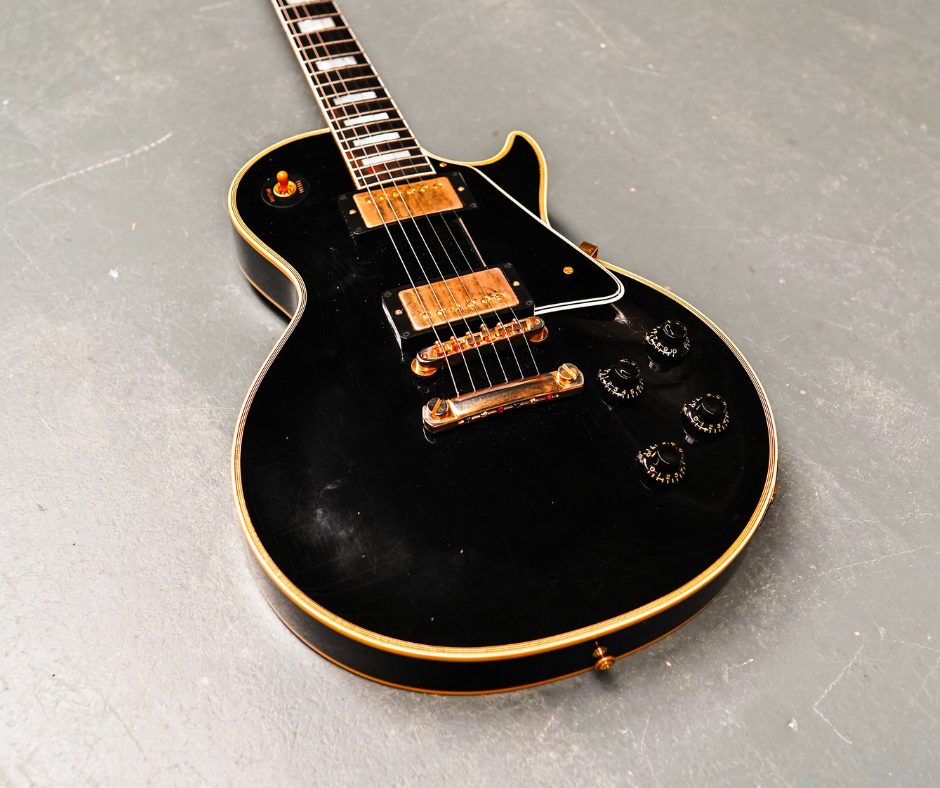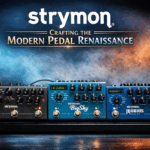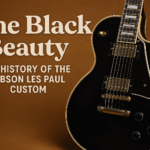The Les Paul Custom is an iconic guitar that has earned a place of reverence in the music world. Revered for its striking aesthetics, superb craftsmanship, and signature sound, the Les Paul Custom has been a favorite among professional musicians for over six decades. Let’s take a journey through its fascinating history, from its inception to its modern-day prominence.
Origins: The Birth of a Classic
The story of the Les Paul Custom begins with the collaboration between guitar pioneer Les Paul and the Gibson Guitar Corporation. Les Paul, a virtuoso guitarist and inventor, had already revolutionized music with his early work on electric guitars, but in 1954, he sought to create something even more refined—a guitar that would combine beauty, playability, and superior tonal quality. The result was the Les Paul Custom, designed to be the top-of-the-line model in the growing Les Paul family.
Introduced in 1954, the Les Paul Custom was nicknamed “The Fretless Wonder” due to its low, fast frets that allowed for smoother and faster playing. It was positioned as a luxury instrument, standing out from other Les Paul models thanks to its premium appointments and distinctive black finish, earning it the nickname “Black Beauty.”
Craftsmanship and Design
The original Les Paul Custom was an embodiment of elegance and precision. It featured a mahogany body and neck, which gave it a warm, resonant sound with great sustain. The guitar was equipped with a single-piece mahogany top, rather than the maple cap found on the Les Paul Standard, which added a different tonal character. A distinguishing feature of the Les Paul Custom was the bound body, neck, and headstock, offering a more deluxe aesthetic appeal.
Aesthetically, the Les Paul Custom was adorned with gold hardware, multi-ply binding, and large block inlays on the fingerboard. The attention to detail in craftsmanship and the high-quality materials used made the Custom an aspirational model for guitarists looking for both tonal depth and visual impact.
One of the most significant differences was the electronics. The original Les Paul Custom featured one P-90 single-coil pickup in the bridge position and an Alnico V pickup in the neck. However, in 1957, Gibson introduced humbucker pickups—an innovation by Seth Lover designed to eliminate the hum and noise associated with single-coils. The Les Paul Custom adopted this configuration, marking a significant shift in its sound and appeal.
The “Black Beauty” and Early Popularity
The Black Beauty Les Paul Custom quickly became one of the most visually striking guitars in the world. Its sleek black finish contrasted with its gold hardware, making it instantly recognizable. It was marketed as the guitar for professional musicians, offering luxurious looks and refined performance. The Custom’s smooth, low-action fretboard was designed for fast playing, making it popular with jazz musicians and early rock and roll players alike.
In the late 1950s and early 1960s, however, the popularity of the Les Paul line dipped, with the rise of other guitar designs like the Fender Stratocaster and Telecaster. This led to Gibson discontinuing the original Les Paul models, including the Custom, in 1961. For a short period, the Les Paul Custom model was replaced by the Gibson SG, which was initially branded as a Les Paul before Les Paul himself asked to have his name removed from the new design.
Revival and Resurgence in the 1960s and 1970s
By the late 1960s, guitarists began rediscovering the Les Paul models, and their appreciation for the guitar’s tone and versatility soared. Guitar icons like Eric Clapton, Jimmy Page, and Keith Richards helped bring the Les Paul back into the spotlight. In response, Gibson reintroduced the Les Paul Custom in 1968, restoring the classic design features that made it legendary.
The reissue of the Les Paul Custom in 1968 brought back many of the characteristics of the original, including the black finish, gold hardware, and luxurious aesthetic. However, changes were made over the years, including the introduction of a maple top (in place of the all-mahogany body) and a three-piece mahogany neck for added strength.
Les Paul Custom in Modern Times
Through the decades, the Les Paul Custom has retained its status as the pinnacle of Gibson’s electric guitar line. Its timeless design and exceptional craftsmanship have made it a favorite among guitarists in rock, metal, jazz, and other genres. Guitarists such as Randy Rhoads, Peter Frampton, and Zakk Wylde have famously wielded the Les Paul Custom, solidifying its place in music history.
Today’s Les Paul Custom models maintain the elegance of the original, but also offer modern innovations. Contemporary versions feature advancements like improved weight relief to make the guitar more comfortable to play over long performances, as well as advanced electronics for even greater tonal versatility.
Conclusion: A Timeless Legacy
The Les Paul Custom remains a symbol of sophistication and musical mastery. Its iconic black finish, powerful humbucker pickups, and luxurious appointments make it a dream guitar for musicians across genres. From its debut as the “Black Beauty” to its role in shaping the sound of modern rock and metal, the Les Paul Custom continues to inspire guitarists and uphold its legacy as one of the most influential electric guitars in history.
The combination of its rich history, unmatched craftsmanship, and unparalleled tone ensure that the Les Paul Custom will remain an enduring favorite for generations to come.







